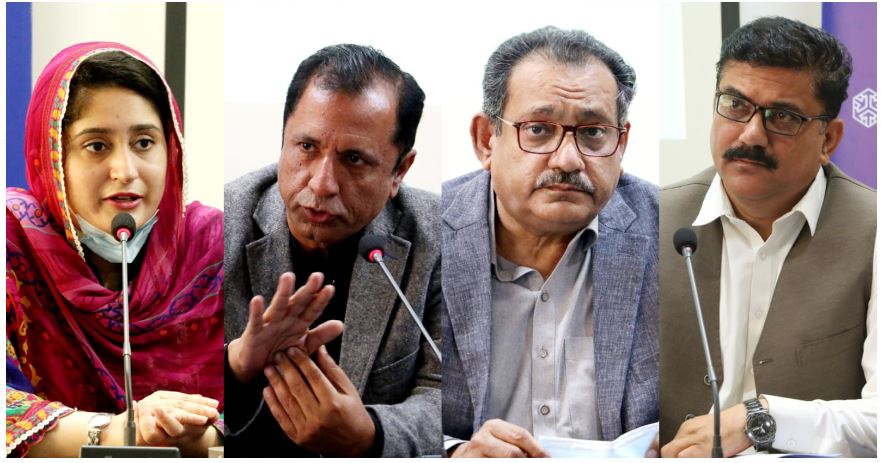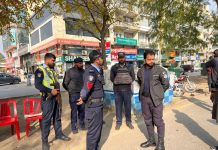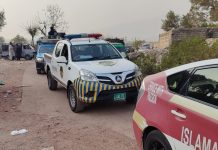Staff Report
ISLAMABAD: The experts at a seminar on Friday underlined that amid growing population and climate-induced disaster risks it has become imperative for the federal capital to maintain a climate resilient infrastructure to sustain as a livable metropolis.
The seminar titled, ‘Building Urban Climate Resilience in Islamabad,’ was jointly organized by Sustainable Development Policy Institute (SDPI) and Climate Action Network South Asia (CANSA) here. CANSA representatives participated in the seminar online.
Stressing the need to establish some model municipalities having climate resilient infrastructure, SDPI Deputy Executive Director, Dr Shafqat Munir said that Pakistan needs to have a strong local government system to develop climate smart urban centers whereas devolution at the small-scale needs to be achieved as every disaster hits local tier or bottom level of states, such as cities or municipalities.
Referring to the SDPI Report on the same title, he said: “in Nepal, a mayor from a small municipality has developed climate smart infrastructure in his municipality, but in Pakistan, financial constraints for local level authorities are the main impediments to achieve the goal of urban resilience.”
He, however, pointed out that there a lack of strong local government system in the country, which needs to be made stronger, and democratic with maximum powers rest with the elected local leadership.
He informed that the SDPI is also engaging with provincial governments to convince them to invest in peri-urban areas and local governments for the sake of climate resilience.
Aleena Kareem said transparency in public projects, better reporting and impact evaluation mechanisms and public-private partnerships could support urban resilience initiatives. She suggested the authorities concerned to come up with net zero targets for Islamabad to contain its carbon emissions to avoid climate disasters.
Nakul from CANSA said Pakistan has highest population growth and urbanization rates needs a proper mechanism and effort in this regard. Since the cities in South Asia are at the receiving end due to the economic nature of development, robust efforts are required other than COP forums to meet its urban resilience goals, Nakul added.
Associate Research Fellow, SDPI, Zainab Naeem delivered a brief presentation on the Report which said: “around 4.3 billion people. i.e. 55% of world population, live in urban centers whereas the South Asia has accelerated growth trend with one of the highest urbanization trends in Pakistan”.
She highlighted that the nexus between climate change and urban growth is prevalent in major economic sectors in the entire South Asia.
“Climate Change can exacerbate existing health risks in urban areas due to factors like air pollution and extreme heat. However, South Asia would require $215 billion annually by 2030 for flood protection due to recurring flood risks,” she added.
“Annual mean temperature per decade increased by 0.32° Celsius in Pakistan with a significant increasing trend of annual mean temperature between 1961-2022 following rapid population increase due to rural-to-urban migration,” she noted.
The Report suggests some action points leading to institutional building, coordination and governance, policy interventions, planning frameworks like green procurement, supply chains, pollution laws and liabilities on polluters and financing to create sustainable revenue streams for green and resilient urbanization.
Pakistan Environmental Protection Agency (Pak-EPA) Ashiq Nawaz said the federal capital was established to cater to the needs of the federation, but it had become a business hub that spilled over the burden of population and services beyond its capacity.
The natural water courses of the federal capital got polluted after trash and waste dumping that created silt in the nullahs leading to urban flooding risk, whereas it was generating 600 tonnes per day solid waste without a proper landfill site, which was serious matter of concern, he added.
“EPA wants segregation at source and integrated resource management that will help in decomposing major waste on source to better manage the solid waste,” he said.
Irfan Niazi, Deputy Director General, Environment Wing of Capital Development Authority (CDA), informed the participants that Margalla Hill National Park comprised of three types of land mainly forest reserve compartment, military grazing lands and acquired land of CDA.
However, he said, the encroachments in the first two categories were negligible whereas the acquired land area has the population still inhabiting that were not given compensation money against the procured land.






